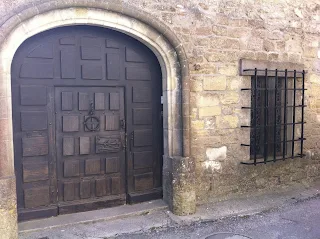Visiting the Chateau where the Duke of Windsor Married Wallis Simpson with Juilliard Graduate Florence Paget and Savvy Mom Ruth Paget
On the way to Château de Candé outside Tours, in Monts, France, I told my daughter Florence that we were going to see the castle where a real love story wedding took place.
Candé is the château where the Duke of
Windsor (formerly King Edward VIII of England) married the American Wallis
Simpson.
“The English king
loved his American sweetheart so much that he gave up his throne for her,” I
told Florence. I was sure he had
investment income and other resources to take care of him and Wallis, but he
rid himself of rigmarole.
Florence was
excited to see Candé, which is hidden from view and required reservations to
visit months ahead of time when we visited.
There was no
furniture in the château when we entered, but it had been remarkably well
preserved. The first room we visited had
iron grips on the fireplace. Our guide
told us that men would hold onto these grips when they had wet boots. They would dangle their feet close to the
fire and dry their shoes after a hunt.
We took a picture of Florence doing this. I thought she had visited some pretty nice
spots in her day.
The second room
we visited was a study in luxury.
Instead of wallpaper, the walls were covered with patterned leather from
Cordoba, Spain. The leather was soft to
the touch. Several of Candé’s owners had
been Spanish, which would explain this lovely addition to the château.
The Duke of
Windsor married Wallis Simpson in the library.
The bookshelves were full of English books. The one-of-a-kind organ came from America
and could be played by key or scroll.
The Art Déco
marble bathrooms had modern toilets, tubs, and sinks. The marble was green and the floor tile was
white porcelain. I turned on the
bathroom lights and let Florence look at herself in the Art Déco mirror.
The Château de Candé was built in 1313. Its most illustrious owner was François
Briçonnet, the mayor of Tours and state treasurer. In 1927, Charles Bedeux bought the château and
installed modern plumbing and central heating.
He also built a golf course, tennis court, gymnasium, and solarium. Fern Bedeau left the castle and grounds to
the French state upon her death in 1972.
“You go to play in a real château,” I told Florence as we left to go home through the
forest.
By Ruth Paget - Author of Eating Soup with Chopsticks and Marrying France
Click here for: Ruth Paget's Amazon Books
Click here for: Ruth Paget's Amazon Books
 |
| Ruth Paget Selfie |




